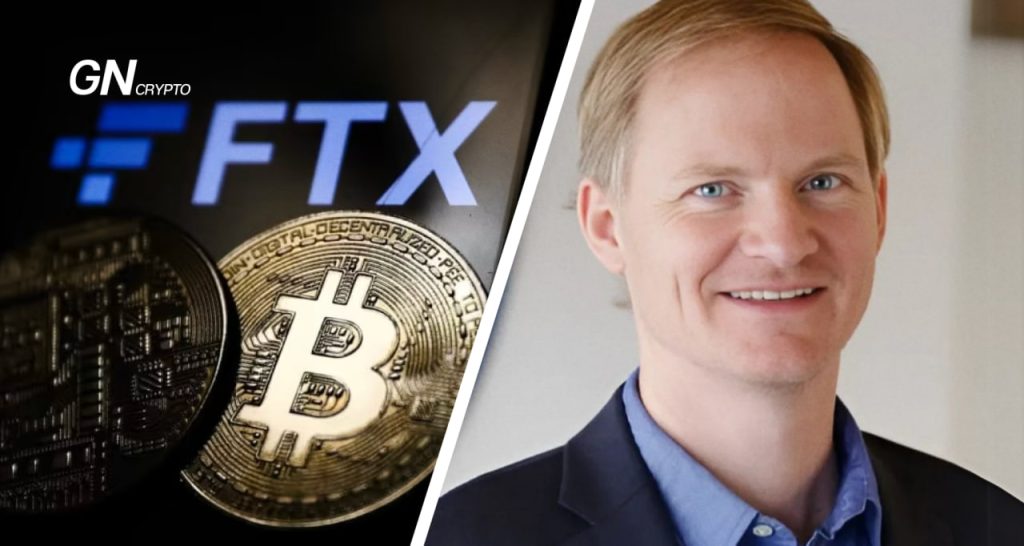The Crypto Rollercoaster of 2024 — Wins and Woes

The crypto sector evolved at breakneck speed in 2024. With major wins and notable setbacks, it’s time to reflect on the year’s key developments and their implications for the future.
On this page
- Q1 2024 — The Bitcoin ETF Breakthrough, Trump’s U-Turn, and SBF’s Prison Sentence
- Q2 2024: BTC’s Fourth Halving, Crypto in Politics, and the Struggle Over Seized Assets
- Q3 2024: MiCA Ushers in Change, Trump Gains Ground, and the Fed Adjusts Course
- Q4 2024: Trump Wins, Gensler Out, MicroStrategy Soars, and Bitcoin Breaks $100,000
- On the Brink of 2025 — What Comes Next?
This overview stems from the findings in K33’s 2024 Year in Review report, complemented by links to GNcrypto’s in-depth articles.
*K33 is a Nasdaq First North Growth Market-listed digital asset broker known for its research-driven approach (ticker: K33).
Q1 2024 — The Bitcoin ETF Breakthrough, Trump’s U-Turn, and SBF’s Prison Sentence
The crypto world saw defining moments in early 2024, with the approval of Bitcoin ETFs, major liquidations, and a surprising endorsement from political figures.
The drama unfolded on January 9 as hackers used the SEC’s X account to falsely declare ETF approvals, causing Bitcoin to gain $1,000 almost instantly.
On January 10, 2024, the SEC officially approved 11 Bitcoin spot ETFs, marking a historic milestone for the crypto industry. This decision granted traditional and institutional investors a regulated avenue to gain exposure to Bitcoin without holding the asset directly. The move significantly boosted market liquidity and triggered a long-anticipated price rally. Approved products included offerings from major players like BlackRock, Fidelity, and Grayscale.
On January 11, Senator Elizabeth Warren denounced the move, emphasizing that cryptocurrencies should comply with stringent anti-money laundering laws to maintain regulatory integrity.
On January 22, 2024, FTX finalized the sale of 22 million Grayscale Bitcoin Trust shares for $1 billion. This action followed GBTC’s transition to a spot Bitcoin ETF and contributed to a $2 billion withdrawal from the trust.
February 16, 2024, saw Genesis Global receive approval to liquidate $1.6 billion worth of Grayscale trust shares. The sale, including $1.38 billion in GBTC shares and $207 million in Ethereum Trust shares, provided crucial funds to repay creditors.
On the same day, Celsius Network distributed $2 billion in cryptocurrency to 171,672 creditors, with the payout comprising 20,255 BTC and 301,338 ETH. This marks a significant development in its bankruptcy proceedings.
February 23, 2024, saw a notable shift in President-Elect Donald Trump’s stance on Bitcoin, as he praised its potential for facilitating modern payment systems. This represents a sharp contrast to his previous stance in 2019 when he referred to Bitcoin as fraudulent.
Donald Trump declared his vision to establish the United States as the world's foremost cryptocurrency powerhouse. Source: Euronews
On March 4, 2024, MicroStrategy took another giant leap into the Bitcoin world, announcing a private placement of $600 million in convertible senior notes due in 2030. The proceeds were funneled into acquiring even more BTC, pushing the company’s reserves to an astounding 193,000 BTC—valued at over $13 billion by the end of February. This bold Bitcoin strategy soon gained the endorsement of other corporate treasuries.
March 5, 2024, marked another milestone: Bitcoin-focused investment funds crossed the 1 million BTC threshold under management, worth $67 billion at the time. More than 83% of these assets were held in U.S.-based spot and futures Bitcoin ETFs.
On the same Bitcoin soared to new heights, hitting a record $69,324 and surpassing its previous peak from November 2021. The surge was fueled by increasing institutional interest in BTC.
Just days later, on March 11, 2024, Donald Trump revealed for the first time that he occasionally accepts payments in Bitcoin, calling it an alternative form of currency.
Later that month, on March 19, 2024, Japan's $1.5 trillion Government Pension Investment Fund (GPIF) announced its intention to include illiquid assets such as Bitcoin in its portfolio. This initiative is part of a forward-thinking strategy aimed at navigating changes in the economic, social, and technological landscape.
FTX founder Sam Bankman-Fried was sentenced on March 28, 2024, to 25 years in federal prison for fraud that led to $8 billion in investor losses. The court additionally required him to pay $11 billion in restitution to the defrauded parties.
Sam Bankman-Fried’s downfall. Source: ideastream.org
Q2 2024: BTC’s Fourth Halving, Crypto in Politics, and the Struggle Over Seized Assets
The second quarter of 2024 was dominated by two major narratives: a deepening clash between the SEC and crypto companies, and continued progress in the acceptance of Bitcoin and Ethereum ETFs. Meanwhile, Bitcoin's fourth halving cemented the quarter as a landmark period for the crypto market.
On April 15, 2024, Hong Kong's Securities and Futures Commission (SFC) provisionally approved the launch of spot ETFs for Bitcoin and Ethereum. The products are set to be managed by China Asset Management, Harvest Fund Management, and Bosera Asset Management, in collaboration with HashKey, signaling a significant leap for regional crypto investments.
April 19, 2024, marked the Bitcoin network’s fourth halving, with miner rewards dropping from 6.25 BTC to 3.125 BTC—a significant event that underscored Bitcoin’s scarcity model.
Three days later, on April 22, 2024, Mt. Gox trustees disclosed progress on rehabilitation payouts, specifying the Bitcoin (BTC) and Bitcoin Cash (BCH) amounts to be returned and outlining an expected timeline for the process.
On April 25, 2024, ConsenSys, the force behind MetaMask, launched a legal battle against the SEC. The company accused the regulator of overreaching by attempting to classify ETH as a security and filed for an injunction to stop further interference with Ethereum-based technologies.
On May 6, 2024, Robinhood Markets revealed it was facing scrutiny from the SEC after receiving a Wells Notice. The Commission questioned Robinhood Crypto’s handling of cryptocurrency listings and asset custody practices. In its defense, Robinhood asserted that the digital assets on its platform are not securities and vowed to cooperate with the regulator.
Gary Gensler relentlessly targeted the crypto industry throughout 2024. Source: cryptotimes.io
On May 21, 2024, Donald Trump’s presidential campaign introduced cryptocurrency donations, pioneering a new era for digital assets in political fundraising. Contributions could be made in BTC, ETH, and other cryptocurrencies, signaling a shift in campaign financing.
Сheck out: Trump Unveils Exclusive Bitcoin Sneakers
On May 18, 2024, Genesis Global Capital’s restructuring plan received court approval from a U.S. bankruptcy judge. This pivotal decision allowed Gemini to proceed with returning approximately 97% of the assets to participants in its Earn program.
On May 22, 2024, the U.S. House of Representatives took a historic step by passing the Financial Innovation and Technology for the 21st Century Act (FIT21). The legislation establishes a modern regulatory framework for digital assets and clarifies the division of power between the CFTC and SEC.
The following day, May 23, 2024, the SEC approved eight spot Ethereum ETFs, launched by industry leaders BlackRock, Fidelity, and Grayscale, reflecting a significant advancement in crypto asset investment products.
On May 26, 2024, Donald Trump took a firm stand against the development of a central bank digital currency (CBDC) in the United States, emphasizing his commitment to protecting citizens' rights to manage their digital assets independently. He also pledged to reduce the prison sentence of Ross Ulbricht, the Silk Road founder serving two life terms.
On May 31, 2024, President Joe Biden vetoed a bipartisan resolution aimed at repealing SEC-issued Staff Accounting Bulletin No. 121 (SAB 121). The bulletin requires financial institutions to report customer-owned digital assets as liabilities. Biden defended the decision, stating that overturning the policy would undermine the SEC’s role.
President Joe Biden’s legacy includes his steadfast opposition to the cryptocurrency sector. Source: CNN
On June 19, 2024, the Federal Criminal Police Office of Germany (BKA) transferred 6,500 BTC—equivalent to $425 million—to various addresses, including significant deposits of $32 million on Kraken and Bitstamp. This transfer, involving Bitcoin confiscated in the Movie2k piracy case, stirred speculation about the German government’s intent to liquidate and the potential consequences for the country’s crypto sector.
A week later, on June 26, 2024, the U.S. government transferred 3,940 BTC, valued at $240 million, to a Coinbase Prime wallet. These funds, seized from convicted drug dealer Banmeet Singh, reignited concerns about the effects of dumping confiscated digital assets on the fragile balance of the crypto market.
Q3 2024: MiCA Ushers in Change, Trump Gains Ground, and the Fed Adjusts Course
The third quarter of 2024 was a defining period for the cryptocurrency industry. The EU’s rollout of MiCA regulations set a new standard for compliance, while institutional investors embraced spot BTC and ETH ETFs at an unprecedented rate. Meanwhile, global markets were rocked by the unwinding of yen carry trades and a decisive interest rate cut by the U.S. Federal Reserve.
On July 3, 2024, MiCA’s partial implementation in the EU pushed traders to replace non-compliant stablecoins with regulated alternatives. Issuers were required to obtain approval from at least one EU member state. Leading exchanges like Coinbase reacted by announcing plans to delist certain stablecoins to comply with the new regulatory landscape.
On July 13, 2024, Donald Trump narrowly escaped an assassination attempt during a rally in Pennsylvania. The attacker, 20-year-old Thomas Matthew Crooks, fatally shot one attendee and critically wounded two others. Trump sustained a minor injury when a bullet grazed his right ear. The Secret Service swiftly eliminated the shooter, while memecoins TRUMP, MAGA, and TREMP surged 30% in the incident’s aftermath.
Two days later, on July 15, 2024, Trump announced Ohio Senator J.D. Vance as his vice-presidential candidate. Vance’s financial disclosures, showing Bitcoin holdings worth between $250,000 and $500,000, highlighted the administration’s alignment with crypto innovation. $250 000-$500 000.
Donald Trump takes bold steps toward building a pro-crypto administration. Source: businesstoday.in
On July 16, 2024, Mt. Gox, the cryptocurrency exchange that collapsed in 2014, moved $3.1 billion in BTC to a newly created unmarked address. This transfer marked a significant step in the repayment process for its long-waiting creditors.
On July 21, 2024, Joe Biden officially withdrew from the 2024 presidential race, endorsing Vice President Kamala Harris as the Democratic Party’s candidate. His decision came on the heels of a debate performance widely seen as a setback against Donald Trump.
On July 27, 2024, speaking at the Bitcoin 2024 conference, Donald Trump unveiled a bold plan to establish a national Bitcoin reserve, positioning the U.S. as the leader in the global cryptocurrency market. He also promised to fire SEC Chair Gary Gensler, calling out his restrictive approach to crypto regulation.
On July 27, 2024, advisors for Kamala Harris’s presidential campaign initiated discussions with top crypto companies, including Coinbase, Circle, and Ripple Labs. The goal was to build bridges between the Democratic Party and the cryptocurrency industry, positioning Harris as a “pro-business” candidate in contrast to the Biden administration’s regulatory crackdown.
On August 2, 2024, Morgan Stanley announced a landmark decision, allowing 15,000 of its financial advisors to offer spot Bitcoin ETFs to eligible clients. These products, such as BlackRock’s iShares Bitcoin Trust and Fidelity’s Wise Origin Bitcoin Fund, were made available to clients with portfolios of $1.5 million or more and a high risk tolerance. Morgan Stanley became the first major Wall Street bank to endorse Bitcoin ETFs in this way.
On August 2, 2024, Genesis Global Capital marked a turning point by completing its restructuring and distributing $4 billion in digital assets and cash. Creditors are set to recover an average of 64%, with payouts varying depending on the type of cryptocurrency held.
On August 5, 2024, global markets were shaken as the Japanese yen soared amid the collapse of carry trades. This sharp appreciation led to a dramatic deleveraging, wiping out major equity gains and sending Japan’s TOPIX index plummeting 12%—its largest one-day loss in nearly four decades.
On August 24, 2024, Telegram’s CEO Pavel Durov was arrested at Le Bourget Airport in France on charges linked to illegal activities facilitated through the platform. Authorities accused Durov of aiding the spread of content related to drug trafficking and child exploitation, sending shockwaves through the tech community.
On September 12, 2024, Swift announced an ambitious plan to bridge fiat currencies with tokenized assets, promising seamless transactions. The company is actively testing multi-ledger DvP (Delivery versus Payment) and PvP (Payment versus Payment) operations with fiat currencies, with a vision to integrate CBDCs and regulated stablecoins in the near future.
On September 16, 2024, World Liberty Financial (WLFI) launched its governance token, aiming to raise $300 million. By December, however, it had garnered only $74.7 million. Despite high-profile backing from Donald Trump and widespread publicity, the project faced mounting regulatory scrutiny and operational setbacks.
On September 18, 2024, the Federal Reserve slashed its interest rate by 50 basis points to 4.75–5%, marking its first rate cut in four years. The move was a bold response to signs of a slowing labor market and controlled inflation, aimed at sustaining economic momentum.
Jerome Powell crowned Changemaker of 2024. Source: business-standard.com
Q4 2024: Trump Wins, Gensler Out, MicroStrategy Soars, and Bitcoin Breaks $100,000
The closing quarter of 2024 ushered in a new chapter for the crypto industry. With the SEC approving options trading for Bitcoin ETFs, Donald Trump’s election signaling a pro-crypto shift, and Bitcoin crossing the $100,000 mark, the industry witnessed historic milestones.
On October 7, 2024, U.S. Bankruptcy Judge John Dorsey approved the reorganization plan for FTX, clearing the way for creditor repayments. The plan guarantees that 98% of creditors will receive a minimum of 118% of their claims, providing a sense of resolution to a protracted financial crisis.
On October 10, 2024, the SEC accused Cumberland DRW LLC, a prominent Chicago-based firm, of operating unlawfully as an unregistered crypto dealer. With over $2 billion in transactions since March 2018, Cumberland fired back at the SEC, calling its enforcement strategy misguided and overly aggressive.
On October 14, 2024, Vice President Kamala Harris unveiled the “Opportunities for Black Men” program, proposing a regulatory framework for digital assets. The initiative pointed to the significant crypto adoption among Black Americans—over 20%—as a driving factor for ensuring investor protections and fostering trust.
Kamala Harris faced resistance from the crypto industry in her presidential campaign efforts.
On October 18, 2024, the SEC made waves by approving the NYSE and Cboe Global Markets to list and trade options on spot Bitcoin ETFs. This decision empowers investors with advanced tools for hedging and speculating on Bitcoin’s market trends.
On October 30, 2024, MicroStrategy announced its ambitious “Plan 21/21,” setting a goal to raise $42 billion over three years to solidify its position as a Bitcoin leader. The plan combines $21 billion from stock sales and $21 billion from debt issuance to fuel its expansion.
On November 1, 2024, UBS Asset Management introduced the UBS USD Money Market Investment Fund Token (uMINT), its first tokenized fund deployed on Ethereum. This innovative solution provides institutional investors with streamlined access to money market instruments via blockchain technology.
On November 5, 2024, Donald Trump triumphed in the presidential election, becoming the 47th president of the United States. With 312 electoral votes to Kamala Harris’s 226 and victories in swing states like Pennsylvania, Wisconsin, and Michigan, Trump also secured the popular vote with 49.9% compared to Harris’s 48.4%.
On November 10, 2024, MicroStrategy made a bold move by acquiring 27,200 BTC for $2.03 billion at an average price of $74,463 per Bitcoin. This brought its total Bitcoin holdings to an impressive 279,420 BTC, valued at $23 billion. The purchase was funded through the sale of company stock under existing agreements.
On November 19, 2024, BlackRock’s iShares Bitcoin Trust (IBIT) ETF debuted options trading on Nasdaq, making history with $1.9 billion in trading volume and 354,000 contracts exchanged. This breakthrough strengthened crypto’s foothold in traditional financial markets and provided investors with cutting-edge hedging options.
On November 21, 2024, SEC Chairman Gary Gensler announced he would step down on January 20, 2025, coinciding with Donald Trump’s inauguration. The news was met with enthusiasm from the crypto community, which hopes for more lenient regulation under the incoming administration.
On November 24, 2024, Cantor Fitzgerald secured a 5% stake in Tether in a deal worth up to $600 million. The firm, a key custodian of Tether’s reserves, announced the acquisition as its CEO, Howard Lutnick, was nominated for U.S. Secretary of Commerce.
That same day, MicroStrategy made headlines with the purchase of 55,500 BTC for $5.4 billion at an average price of $97,862 per Bitcoin, boosting its total holdings to an incredible 386,700 BTC.
On December 4, 2024, Bitcoin broke through the $100,000 barrier for the first time, reaching a historic peak of $103,000.
Bitcoin’s Milestone Journey to $100,000. Source: Reuters
On December 5, 2024, several major European crypto exchanges delisted Tether (USDT) in compliance with MiCA’s new regulatory framework. The legislation requires stablecoin issuers to secure electronic money licenses—a step Tether had not yet completed—leading platforms like Coinbase to suspend USDT trading.
On December 10, 2024, Mt. Gox reached a turning point by starting creditor payouts, bringing closure to a decade of legal wrangling after its 2014 collapse due to a massive hack.
By December 25, 2024, Virtuals Protocol (VIRTUAL) soared to prominence as the year’s standout cryptocurrency, achieving a staggering 23,079.2% price increase. After starting the year at $0.01311, VIRTUAL experienced a dramatic Q4 surge, hitting $3.04 by Christmas.
On the Brink of 2025 — What Comes Next?
The crypto industry witnessed a transformative year in 2024, with Bitcoin reaching record highs, the introduction of cutting-edge investment tools, and a tightening of regulatory oversight.
While digital assets continue to shape global finance, the year also brought its share of challenges. Major bankruptcies and investor payouts are slowly being addressed, but critical issues like the risk of USDT delistings on European exchanges due to new regulations and persistent security vulnerabilities in digital assets still demand innovative solutions.
2025 is set to be a pivotal year where technology and regulation find a delicate equilibrium.
Will cryptocurrencies see broader adoption, or will the industry encounter unforeseen challenges? As 2024 has shown, the crypto market thrives on unpredictability, offering endless possibilities for those willing to navigate its risks.
Take to heart Warren Buffett’s sage advice: “The stock market is a device for transferring money from the impatient to the patient.” May the new year bring you both patience and triumphs!
The content on The Coinomist is for informational purposes only and should not be interpreted as financial advice. While we strive to provide accurate and up-to-date information, we do not guarantee the accuracy, completeness, or reliability of any content. Neither we accept liability for any errors or omissions in the information provided or for any financial losses incurred as a result of relying on this information. Actions based on this content are at your own risk. Always do your own research and consult a professional. See our Terms, Privacy Policy, and Disclaimers for more details.

































